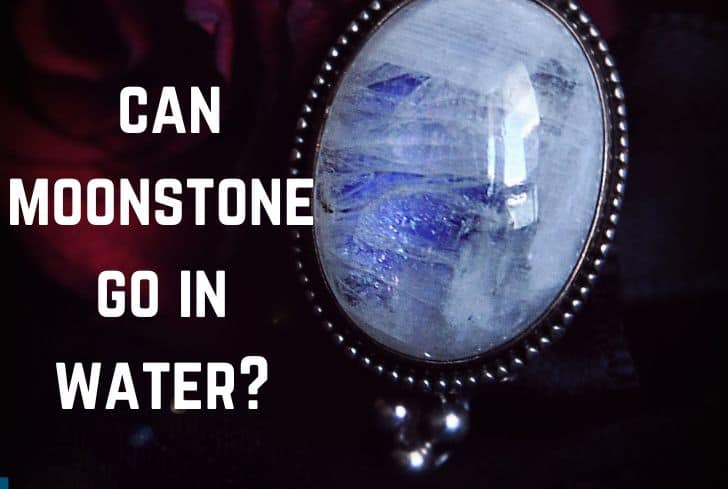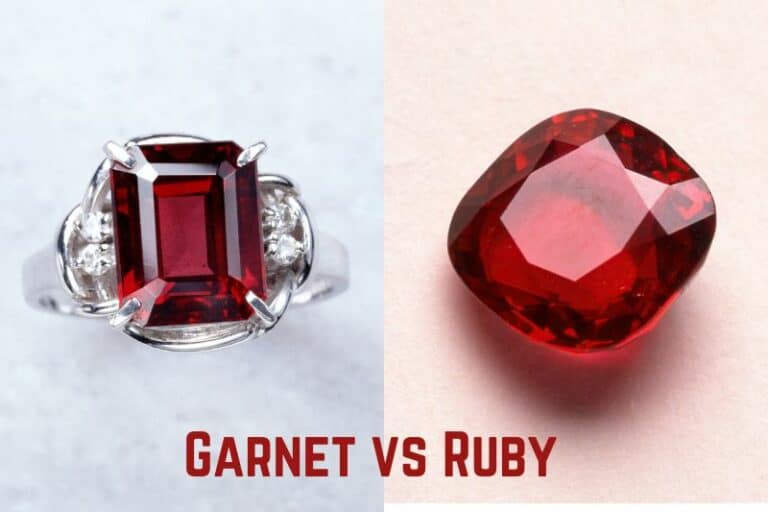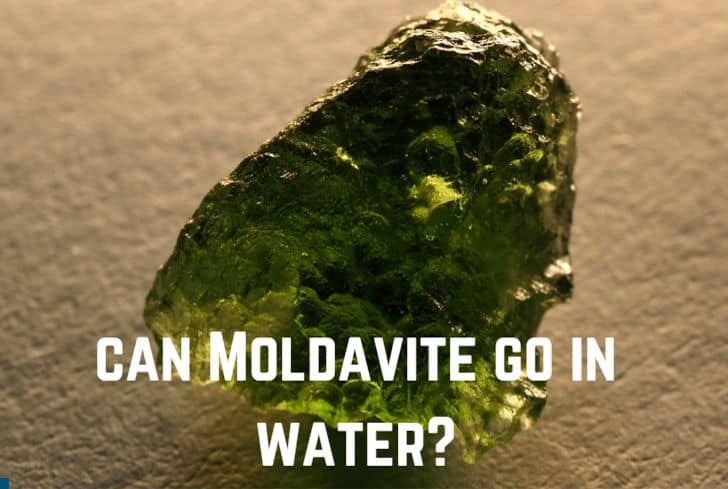Can Aquamarine go in the Water? (And in Sun and Salt)
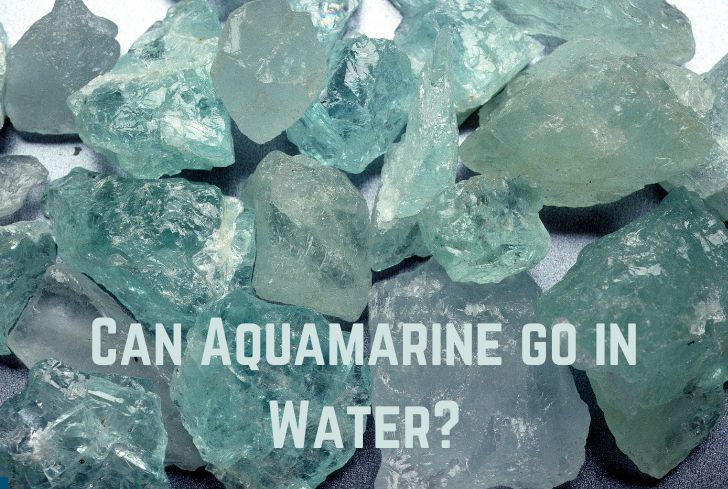
Aquamarine is a gem-quality specimen of the mineral Beryl that is greenish-blue in color. Its name comes from two Latin terms, aqua and marine, meaning water and sea respectively—a reference to the blue colour and the stone’s spiritual properties. Unlike Emerald, another form of beryl, aquamarine is abundant and inexpensive.
Have you ever wondered if aquamarine can go in the water? In this article, we are going to discuss just that. We will begin by looking at the properties of aquamarine. Then, we will discuss its interaction with elements like water, salt, sunlight, etc. Finally, we will learn how to take care of the stone.
Read: Can Amethyst go in the Water?
Can Aquamarine Get wet?
Yes, aquamarine can go in water. It has a value of 7.5-8 on the Mohs Hardness Scale, which is well above the minimum value required for minerals to be safe underwater. However, like all minerals, aquamarine should still not be immersed for too long. Prolonged exposure to water can dull the surface or damage the structure of the stone.
Mohs Hardness Scale is a measure of the relative resistance of a mineral to scratching. Besides that, it also tells us about the relationship between a mineral and water. Usually, a value over 5.0 means that the mineral can safely go underwater.
While softer minerals like selenite (value of 2.0 on the Mohs Scale) will easily get damaged in water, even harder minerals like aquamarine should not be immersed for too long. Over time, water can enter the crevices of the stone and expand them. These fissures may not be visible at first but can slowly expand over time, making the stone more brittle.
Water, over a long period, can also tarnish the appearance of the stone. It strips off the polish of the surface, making it look a lot duller. Fissures, encouraged by water, can also change the way light bounces inside the stone, thus harming the optical properties of the stone and deteriorating its value.
Properties of Aquamarine
These are the properties of Aquamarine:
- Color: Aquamarine’s color ranges from greenish blue to pale blue. Most aquamarine stones have a very light colour, which is sometimes even hard to notice in small stones. Stones with rich blue color are rare, and they are the most valued (and expensive) specimens. Check out this video by the official GIA channel showcasing the color range of Aquamarine.
- Structure: Aquamarine crystals are prismatic or tabular. It has a hexagonal crystal system and the stones have imperfect cleavage. In terms of diaphaneity, aquamarine ranges from transparent to translucent, and it shows a vitreous lustre. Aquamarine is available in a wide range of sizes, and usually, the larger the stone, the stronger the colour.
- Hardness: Aquamarine has a value of 7.5-8.0 on the Mohs Hardness Scale, meaning that it is one of the harder minerals. Only a few popular gems (Diamond, Ruby, etc.) are harder than aquamarine. Because of its hardness, aquamarine is great for all kinds of jewellery. However, the stone has poor tenacity (resistance to impact) and therefore needs to be handled with care.
- Composition: Aquamarine is made up of Beryl and has a chemical composition of Be3Al2Si6O18. Pure beryl is colorless; aquamarine gets its greenish-blue color due to small amounts of iron. This iron is present in two states: ferrous iron gives the stone blue colour, while ferric iron brings yellow (which combines with blue to make greenish blue). The stone usually goes through a gentle heat treatment which enhances these colours.
- Occurrence: Aquamarine crystals are formed in cavities below the earth during the late stage of a magma body’s crystallization. The cavities provide space while the slow underground cooling rate provides the time needed for crystals to form. The late stage brings a supply of beryllium needed to form beryl. Aquamarine stones are usually found in granite pegmatites, and also in the veins of metamorphic rocks.
Because of their hardness and colour, aquamarines are widely used in jewellery. The translucent specimens are usually cut into beads or cabochons. Necklaces are also made from beads of aquamarine and morganite.
Besides its physical properties, aquamarine is also believed to have certain spiritual qualities. It is considered the birthstone of March. Ancient Romans believed that the stone could protect its owners from dangers at the sea. Today, the stone is seen as a symbol of hope, happiness, and youth.
Can Aquamarine go in the Sun?
It is not recommended to put aquamarine out in the sun. While keeping stones out in the sunlight is a common method of recharging, it is not appropriate for all minerals. Prolonged exposure to sunlight can fade the color of Aquamarine from blue to white. This is especially true for the deeper blue variant of aquamarine.
Read: Can Opalite Go in Water?
One of the most popular ways of recharging stones is keeping them out in the sunlight. However, this method is not exactly appropriate for all stones, and it may harm your aquamarine stone.
Aquamarine has a value of 7.5-8.0 on the Mohs Scale and it is quite a hard mineral. However, it is rather vulnerable to sunlight and extreme temperatures. There is a deeper blue version of aquamarine, known as maxixe. But its vivid blue color can fade due to sunlight.
So, in general, it is not recommended to put aquamarine in the sun.
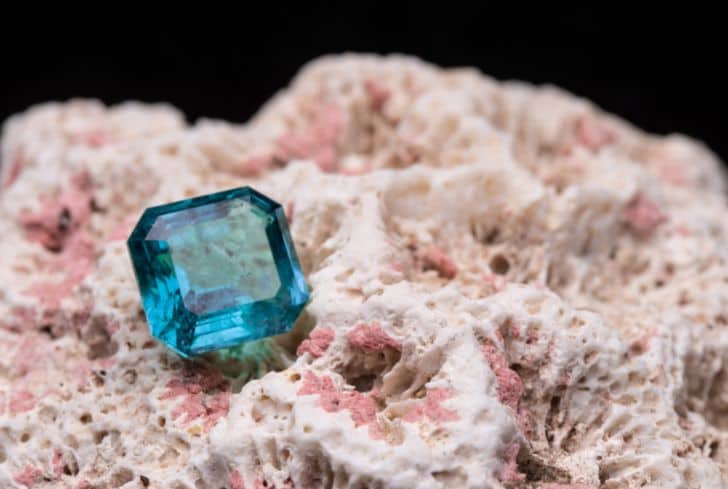
Can Aquamarine go in Salt?
No, it is not recommended to put aquamarine in salt. Putting crystals in a bed of dry salt is a common way of recharging them, but this method is also not suitable for all stones. Although aquamarine is a hard stone (value of 7.5-8 on the Mohs Scale), salt can have a corrosive effect on it.
With the help of water, salt can enter the crevices of stones and encourage fissures. However, even without water, salt can be quite harmful at times. Ultimately, it is a corrosive element, which is especially bad for stones like aquamarine.
Instead of putting your aquamarine in a bed of dry salt or salt water, it is better to clean it using a solution of soap and water (discussed below). For recharging the stone, you can leave it out in the moonlight or smudge it with sage.
Can Aquamarine go in Salt Water?
No, aquamarine should not be put into water. The stone has a value of 7.5-8.0 on the Mohs Hardness Scale, so it can survive underwater. However, it should still not be immersed for too long as that can be damaging to the stone. When we bring salt into the mix, it worsens the corrosive process further.
When salt is dissolved in water, it can enter the crevices of the stone. Here, these particles remain even after the water has evaporated, and they cause the cracks to widen. These fissures can slowly damage the structure of the stone and make it more brittle.
Moreover, salt can combine with the elements of the stone and cause adverse chemical reactions. This is especially true for minerals like aquamarine, which contain iron. Salt hastens the rusting process by making the iron lose its electrons more easily.
Read: Can Selenite Go in Water?
Can Aquamarine go in Moon Water?
Yes, aquamarine can go in moon water. Putting crystals out in moon water (water that has been charged by the light of the moon) is a great way of recharging stones and it works well for aquamarine. Given its value of 7.5-8.0 on the Mohs Scale, aquamarine is a rather hard stone and it is safe to immerse it for a short amount of time.
Sunlight can be quite harsh for many stones, and this is especially true for aquamarine, which can lose its colour in the sun. On the other hand, the gentle light of aquamarine will fill the stone with its energies and recharge it.
Fill up a bowl with water and put it on a windowsill. Immerse the stone in the water, and let it stay overnight. Some people believe that one should avoid recharging the stone with moonlight when there is an eclipse. It’s best to recharge the stone during a full moon.
How to Clean and Take Care of Aquamarine?
Follow these steps to clean aquamarine:
- Mix a soft detergent/soap with lukewarm water.
- Immerse the stone in the solution for a few minutes, cleaning the crevices with a soft brush.
- Rinse the stone under running water to get rid of all soap.
- Let the stone air dry. Make sure you twist it a few times to get rid of all the water.
In most cases, you can also use ultrasonic methods and steam cleaners to clean the stone. However, these methods are not recommended when the stone has inclusions or has been fracture filled. In such cases, cleaning using the soap-water method (discussed above) is the best.
Aquamarine has a value of 7.5-8 on the Mohs Hardness Scale, and it is one of the harder stones. However, it has poor tenacity, meaning that it is prone to breaking upon impact. Therefore a protective mounting is necessary for the stone.
Plus, you should not wear its jewelry during physical activities (sports, swimming, etc.) that can lead to accidental impacts.
Conclusion
In this article, we have discussed whether aquamarine can go into the water or not. Given its value of 7.5-8.0 on the Mohs Scale, the stone is rather hard and it is safe to go in the water. However, like all stones, aquamarine should not be immersed for too long. We looked at the properties of aquamarine and talked about its interaction with other elements. Finally, we discussed how to clean and take care of the stone.


